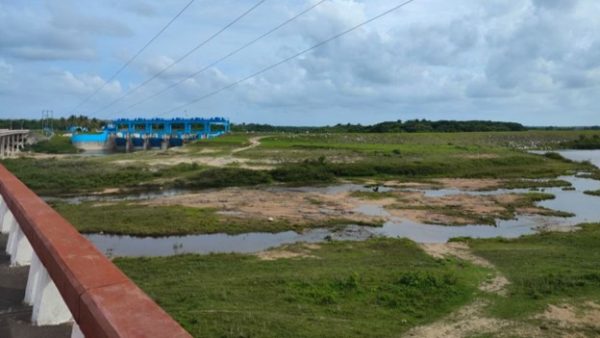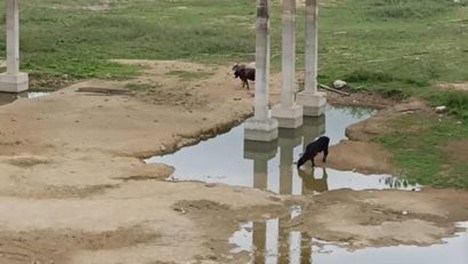Cuba’s Zaza Reservoir Is Exhausted
Where there used to be fish there now are grazing cattle

The drought threatens to make the largest reservoir in Cuba disappear for good.
HAVANA TIMES – If anyone in Cuba is enthusiastic about the current hurricane season, which is predicted to be active, it is the authorities of Hydraulic Resources in Sancti Spíritus. It has been five years since the Zaza dam opened its gates – that is, since it has been completely filled – and the lack of forceful downpours in recent months has made the drought critical. Where before fishermen slipped in to get some tilapia, now there are cows. “All the land you see should be covered with water at least up to the height of the bridge,” says a resident of the area, who arrived on the La Sierpe road to check the state of the reservoir. “This is in very bad condition, and the water has receded so much that the farmers now use the reservoir for their animals,” he says, counting 70 or 80 cows.
“In the end, the drought has had its profitable side, and the cattle feed on that green grass because they are close to the reservoir. The bad thing is that many people have become accustomed to the fact that no water passes through here, or downstream,” reflects the neighbor, although he acknowledges that “what’s worse is that it doesn’t rain.”
The authorities, even at the national level, have a similar concern. It’s been five years since the dam released water, and many residents have established fields and other structures in what used to be the bed of the Zaza River. Although now the largest reservoir on the island holds just 13% of the 1,020 million cubic meters of water it can store, that could change this summer, and the lives of many residents would be in danger.
On June 8, Inés María Chapman, Deputy Prime Minister of Cuba, took a tour of the dam. The intention of the entourage, also composed of the national president of Hydraulic Resources, Antonio Rodríguez Rodríguez, was to alert the provincial authorities because, if there are heavy rains, “there are no conditions as at other times to provide solutions to those problems,” Chapman said.
The official arrived in Zaza two days after an article in the local newspaper, Escambray, announced the desperate measures that were taken so that the reservoir did not become totally empty. It has not been in such a hopeless situation since the 1980s, when it dropped to 100 million cubic meters.

According to Escambray, on that day the volume was 121 million thanks to the rains that occurred in part of Sancti Spíritus. Until that moment, the official press admitted, the water was maintained with transfers from the Tuinucú, Dinorah and Felicidad reservoirs. In May alone, the rainfall was below the historic record low of 98 millimeters (mm), and about 54 mm was reported, just over half. The drought affecting Zaza, which also nourishes other territories such as Ciego de Ávila, has considerably affected other economic lines, beyond the water supply to the population. According to the newspaper, with the decrease in volume, the water was limited to the agro-industrial grain company Sur del Jíbaro in La Sierpe, a rice-producing area that has since seen its production decline.
At the beginning of May, when the press first warned of the complex situation in Zaza, the issue revolved around the fishermen who work in the reservoir, who had to start a frenetic catch before the fish died from the drought.
Zaza is “dying,” said Armando García, a fisherman interviewed by Cubadebate at the time. “You don’t have to throw bread in the water; you can catch fish with your bare hands.”
The authorities have placed their hope on the rains predicted for this month, and that a passing hurricane will bring enough water for the dam to reach a volume that allows it to be used all year round. Last season Zaza was only filled at 40%, and the consequences have been widely seen this 2024.
At the moment, the dam gates have dry walls, the puddles of stagnant water have begun to turn green, and in what used to be the bottom of the reservoir the cattle have created paths in the grass.
Translated by Regina Anavy for Translating Cuba.






We must blame Fidel for the Zaza situation. And Maduro too. Of course Raul is a culprit too.